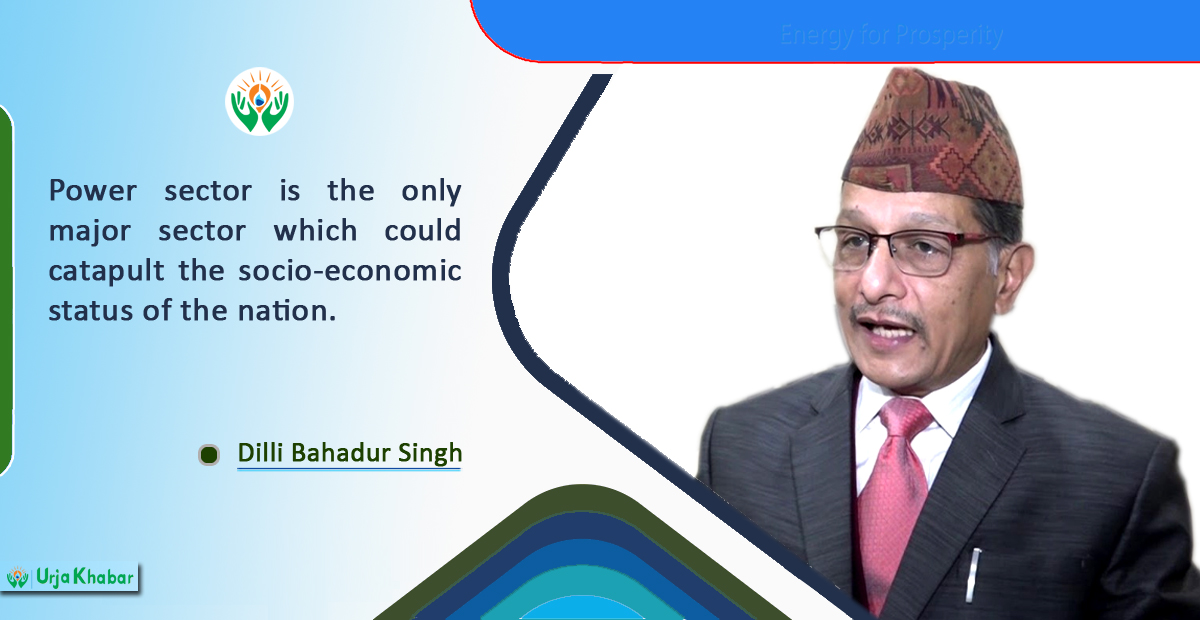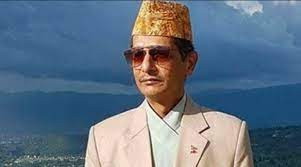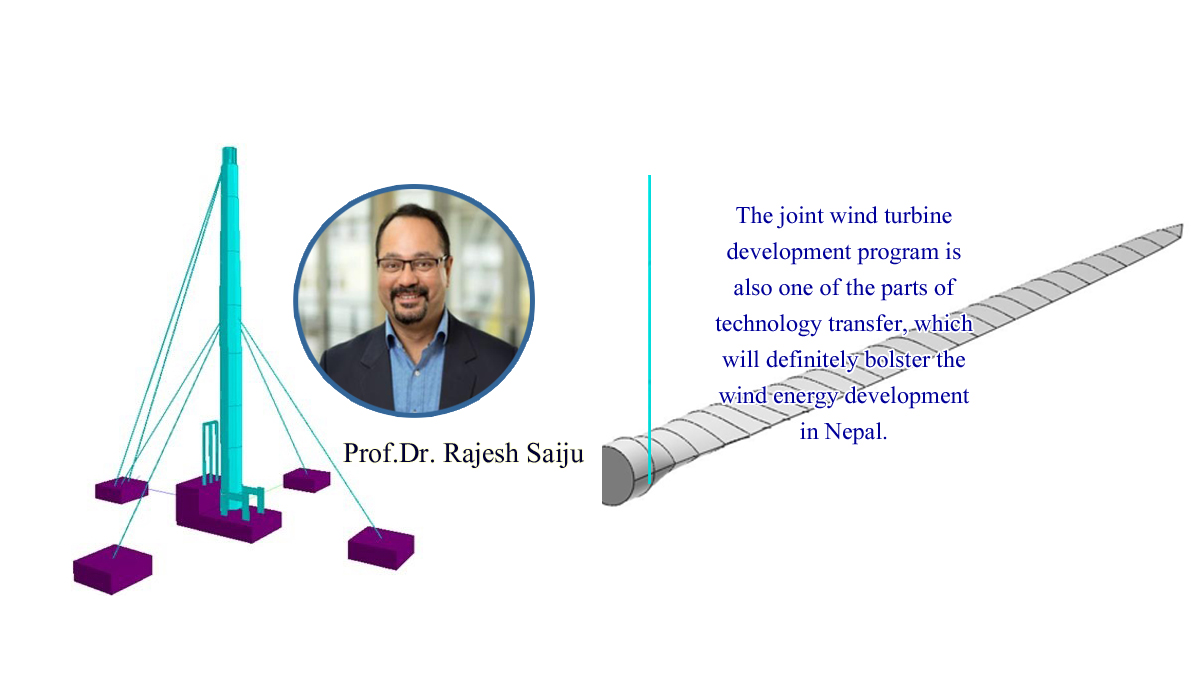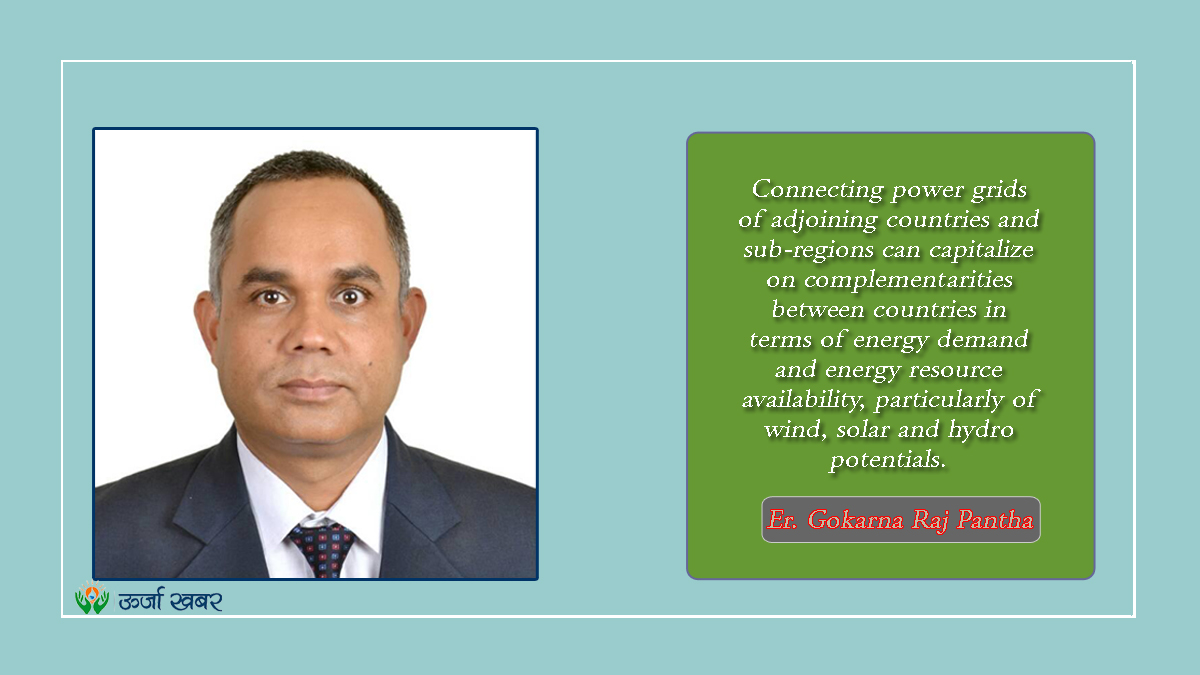Energy Update
The Electricity Regulatory Commission: An Introduction

Its main objectives include maintaining a balance between the demand and supply of electricity by making necessary arrangement for the generation, transmission, distribution, and/or trading of eletricity, regulate the electricity tariff and protect the rights and interests of the electricity consumers.
Introduction

The Electricity Regulatory Commission (ERC) is the independent regulator of Nepal’s electricity sector established on May 9, 2019, under the Electricity Regulatory Commission Act, 2017 and Electricity Regulatory Commission Rules, 2018.
The commission was developed as an autonomous and organized regulatory body to regulate the electricity sector and to maximize the use of the available resources under provisions of the existing act and regulation. Its main objectives include maintaining a balance between the demand and supply of electricity by making necessary arrangements for the generation, transmission, distribution, and/or trading of electricity in more simplified, regular, systematic, and transparent manners, to regulate the electricity tariff and to protect the rights and interests of the electricity consumers.

Major duties, responsibilities and rights of ERC
• To perform technical management of the electricity sector
• To determine electricity consumer tariff and power purchase rate of electricity
• To maintain competition in the electricity sector and protect the rights of electricity consumers
• To perform organizational capacity development of electricity sector licensees
• To resolve disputes
• To make policy recommendations to the government
• To investigate and inspect
• To provide directions
• To enact bylaws
• To implement directives, standards and codes
Major achievements
Despite challenges posed by the lack of resources and a nominal number of human resources in these early years, the ERC has made some outstanding strides in achievements.
Achievement 1 - Regulatory Instruments
The commission has enacted the following instruments:
• Bylaws on Power Purchase Agreement (PPA) and Conditions to be Followed by Licensees, 2076 (2019)
• Guidelines regarding procedures of meeting of ERC, 2076 (2019)
• Directive relating to determination of consumer tariff, 2076 (2019)
• Directive relating to public issuance of companies related to electricity, 2076 (2020) (Repealed)
• Directive relating to operation of public hearing of ERC, 2076 (2020)
• Directive relating to merger, acquisition, amalgamation, transfer of shares, purchase, and sale of plant, 2077 (2020)
• Directive relating to monitoring and pre-approval for issuance of shares, 2078 (2021)
• Regulatory Road Map of ERC for 5 years (2022)
• ERC Employee Administration Byelaw (submitted to the Ministry of Energy, Water Resources and Irrigation (MoEWRI) and forwarded to the Ministry of Finance for approval)
• ERC Financial Administration Byelaw (submitted to the MoEWRI for seeking approval of the Ministry of Finance)
• Guidelines on the Services, Facilities & Conditions for the members of ERC (submitted to MoEWRI for seeking approval of the Ministry of Finance)
• Common Minimum Grid Code for South Asia (Actively participated during preparation by South Asian Forum For Infrastructure Regulations, SAFIR).
The Electricity Regulatory Commission: An Introduction
• Pursuant to Consumer Electricity Tariff Determination Directive, 2019, ERC has determined consumer electricity tariff of Nepal Electricity Authority (NEA) consumers for Fiscal Years 2019/20 and 2021/22.
• ERC determined the tariff such that consumption tariff rates were reduced by an average of 9% and 1.04% in FY 2019/20 and FY 2021/22, respectively.
• ERC also waived energy charge for all marginalized electricity consumers consuming up to 10 units of electricity by using energy meter of 5 Ampere capacity, through the tariff order for FY 2019/20 and followed up with a decision to waive energy charge for all marginalized electricity consumers consuming up to 20 units of electricity through the tariff order for FY 2021/22.
• This reduction on tariff and waiver of energy charges for certain consumers such as irrigation was aimed at promoting consumption of electricity within the nation and promoting the agriculture sector.
• FY 2019/20 onwards, ERC removed the dedicated and trunk line premium tariff, which was being charged to specific Industrial, Commercial and non-Commercial consumers for providing an uninterrupted supply of electricity even during the load shedding period, throughout the nation.
• Through tariff order for FY 2019/20, ERC reduced the tariff of off-peak hours for Industrial consumers, to encourage them to consume more electricity in the off-peak hours.
• Since FY 2021/22, seasonal tariff has been introduced for domestic consumers (three-phase) with relatively lower tariff during the wet season to encourage them towards more consumption.
Achievement 3 – Determination of PPA Rates and Consent on PPAs
• ERC provided consent to the Power Purchase Agreement of 67 projects over the last four years.
• ERC also provided timely approvals for the amendment of the Power Purchase Agreement to 258 projects in the last four years.
• In FY 2020/21, ERC, for the first time, also determined Power Purchase Rate for a power project over 100 MW of the installed capacity, with its tariff to be subject to downward revision if the ROE of the project exceeds 17 percent. Power Purchase Rate for other five power plants above 100 MW were determined till the date.
• In this way, ERC has been ensuring that the addition of installed capacity is continued by balancing the need for an adequate return of investors and the desire of people to receive affordable electricity.
Achievement 4 – Drafting Regulatory Instruments
The commission has prepared drafts of the following regulatory instruments.
• Development of Grid Code
• Directive relating to Protection of Rights of Electricity Consumers
• Manual on Key Performance Indicators (KPI)
• Development of Distribution code (TOR for hiring consultant is being finalized)
• ERC Dispute Resolution Byelaw
• ERC Byelaws on Internal Conduct of Business
• Open Access Guidelines
• Directives on Transmission Tariff (Wheeling Charge)
• ERC Internal Control System
• Directives on determination of generation tariff of brownfield hydropower projects and PPA
• Bylaws on Utilization of ERC Fund
• Regulatory Accounting System
• Directives in determination of Solar Tariff
• Regulatory Information Management System
• Technical standards of utility
• Directives on Generation Tariff of Hydropower Projects
Achievement 5 – Approval on Petitions
| S. N. | Particulars | FY 2019/20 and 2020/21 Combined | FY 2021/22 | FY 2022/23 (Up to April end, 2023) | Total up to April end, 2023 |
| 1 | Pre-approvals relating to issuance of initial public offering and right shares offering | 24 | 18 | 25 | 67 |
| 2 | Pre-approvals for changes in shareholding structures of licensees | 56 | 21 | 18 | 95 |
| 3 | Determination of PPA rates and granting consent to PPA | 28 | 25 | 36 | 89 |
| 4 | Consent on amendment of PPA and licensees | 56 | 153 | 49 | 258 |
| 5 | Approvals provided to transfer of ownership, acquisition, takeover of licensees | 8 | 8 | 4 | 20 |
| 6 | Approvals on share purchase and sales by licensees | 0 | 10 | 26 | 36 |
| 172 | 235 | 156 | 565 |
Achievement 6 – Others
• Played a key role in coordinating with the Nepal Rastra Bank and the MoEWRI for providing refinancing facility at 3 percent interest rate per annum for sick hydropower projects, which are not able to pay-off their bank interest from the production of electricity by their hydropower plants.
• Change in the clause of Power Purchase Agreement between NEA and Independent Power Producers (IPPs) regarding the availability declaration of energy from 1 month to 1 week and waiver of penalty based on not being able to meet the availability declaration due to adverse changes in hydrology, for the hydropower projects less or equal to 10 MW
• Offered multiple level of inputs to the draft of “Common Minimum Grid Code for South Asia” prepared by South Asian Forum for Infrastructure Regulation (SAFIR)
• rovided comments on the Report of Study on ‘South Asia Energy/Electricity Regulations to develop Regulatory Road Map for Electricity/Energy Exchange and Energy Cooperation (EC) among South Asian Countries’ by SARI/EI
• Provided comments on the Report of Study on transition from bilateral to trilateral and multilateral power trade in South Asia by SARI/EI
Future steps to be taken by ERC
-Development of E-filing system.
-Moving towards Digitalized ERC.
Cross-border Electricity Trade and Market Scenario:
1. It has been almost 23 years since Nepal Government issued Hydropower Policy, 2000 which aimed to develop hydroelectricity as an exportable commodity.
2. current Status and Future Roadmap (Whitepaper) of Energy, Water Resources, and Irrigation, 2018 issued by the Ministry of Energy, Water Resources and Irrigation sought to make Nepal capable of exporting 5,000 MW of electricity by 2028.
3. Reports show that Nepal has been able to sell over Rs 8.3 billion worth of electricity at Indian Energy Exchange (IEX) in FY 2022/23 and NEA, the sole exporter of electricity estimates that Nepal is likely to sell over 16 billion Nepali Rupees worth of electricity in the FY 2022/23. Nepal’s electricity import, which stood at Nepali Rupees 21.82 billion in 2020/21, only imported 15.46 billion Rupees worth of electricity in 2021/22. Nepal is planning to become a net exporter of electricity in a couple of years, even in the dry season.
4. Nepal’s earning from electricity was the third largest when the export of a single commodity is considered in the FY 2021/22.
5. With Butwal-Gorakhpur Cross-Border Transmission Line also gaining headway, Nepal and India are poised to attain a greater degree of interconnection and greater energy cooperation.
6. However, it is a fact that Nepal has been looking for even more regional interconnection and energy cooperation. Bangladesh and Nepal have a great potential in terms of energy cooperation and the secretary-level bilateral energy talk held in Dhaka in May, 2023 paved way, one step ahead, in this matter.
7. Nepal is eager to supply electricity to Bangladesh with a dedicated transmission line through India’s land. Bangladesh has also expressed willingness to buy immediately 50 MW of electricity produced by Nepali power plants. In the meeting of the Nepal-India Energy Secretary-level joint steering committee held in April 2023, India also seems willing to provide support, of course, with some conditions.
8. National Vidyut Vyapar Nigam (NVVN, India) has agreed to buy an additional 200 MW of electricity from NEA. For which ERC had promptly given approval to it.
Way Forward:
All the South Asian countries have slowly come to realize that there is a need for them to come together and be of more help to each other in terms of energy cooperation.
There is a greater need for Nepal to streamline its own internal policy and regulatory framework and institutional and technical mechanisms in order to bring about the best deal for the country. This is a historic moment for Nepal and there is too much potential. Let’s not forget that selling electricity in the regional market and therefore benefiting off the electricity sales is inevitable after fulfilling the domestic demand of Nepal. This means the related institutions also need to come together and support and empower each other so that we have a full-proof system to augment the benefits of electricity trade. Only then we can derive optimum benefits of Nepal’s immense hydroelectricity potential.
Nepal’s dream of gaining prosperity through prudent utilization of its electricity trade cannot be achieved without having a vibrant private sector. Last year, the private sector added 522 MW of power plants to the national grid from 32 power plants (Republica, 2023). There is no doubt that participation of the private sector on power trade shall benefit Nepal. So, the private sector of Nepal should also be permitted for cross-border power trade. For this, the MoEWRI is planning to table the Electricity Bill at parliament shortly.
The ERC, despite the limits posed by lack of resources, is trying its best to ensure that Nepal can reap the benefits of cross-border electricity markets. To this end, the ERC is on its route to finalize its Grid Code. ERC will conduct studies for determination of wheeling charge and transmission charges along with developing Open Access Guidelines. But, for this, either the act should allow or the Government of Nepal should formulate the relevant policy. The Policy/Act and the regulatory Instruments shall provide viability to open access and promote power trade. Many other things are contingent on legal and policy frameworks of the government and the MoEWRI.
Conclusion
Power sector is the only major sector which could catapult the socio-economic status of the nation. So, all the stakeholder concerned need to play a vital role in sustainably developing this sector, losing no time. In this endeavor, the ERC is looking forward to playing the role of a facilitator along with a regulator in building a thriving Nepali electricity sector with a sizable cross-border market.
Mr.Singh is Chairman of Electricity Regulatory Commission
This article is taken from Urja Khabar Semi-annual Journal Publish on 16th June, 2023
Conversation

- Info. Dept. Reg. No. : 254/073/74
- Telephone : +977-1-5321303
- Email : [email protected]













